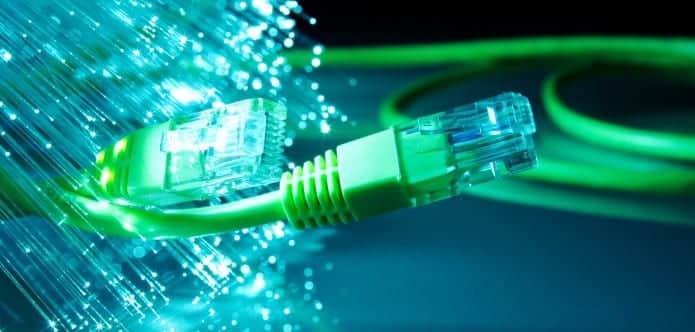Engineers Break the Capacity Limit for Fiber Optic Transmissions, so faster internet is going to become a reality.
Electrical engineers have managed to break the capacity limit for fiber optic transmission, which means faster Internet is soon going to become a reality.
The breakthrough can make the Internet superfast and cheap, by increasing data transmission rates for the fibre optic cables, which serve as the backbone of the Internet, cable and landline networks. Researchers at the University of California, San Diego published in the June 26 issue of the journal Science detailing how they were able to increase the maximum power under which fiber optic signals can be transmitted and accurately decoded. In turn, optic signals can now travel for longer distances without seeing deprivation in quality.
The new study presents a solution to a long-standing obstruction to increasing data transmission rates in optical fiber: beyond a threshold power level, additional power increases irreparably deform the information travelling in the fiber optic cable.
“Today’s fiber optic systems are a little like quicksand. With quicksand, the more you struggle, the faster you sink. With fiber optics, after a certain point, the more power you add to the signal, the more distortion you get, in result preventing a longer reach.
Our approach removes this power limit, which in turn extends how far signals can travel in optical fiber without needing a repeater,” said corresponding author Nikola Alic, from the Qualcomm Institute at University of California – San Diego.
In lab experiments, the researchers at UC San Diego successfully deciphered information after it travelled a record-breaking 12,000 kilometers through fiber optic cables with standard amplifiers and no repeaters, which are electronic regenerators.
The new findings effectively remove the need for electronic regenerators placed occasionally along the fiber link. These regenerators are in fact supercomputers and must be applied to each channel in the transmission. The electronic regeneration in modern lightwave transmission that carries between 80 to 200 channels also dictates the cost and, more importantly, prevents the construction of a transparent optical network.
Therefore, eliminating periodic electronic regeneration will considerably change the economy of the network infrastructure, finally leading to cheaper and more efficient transmission of information.
Generally, when the power behind optic signals transmissions is too high, the level of “crosstalk”, or interference, rises. But because the level and type of interference in such cases is expected, researchers were successfully able to reverse it when the signal reached its destination.
The UC San Diego researchers’ approach is similar to a concert master who tunes multiple instruments in an orchestra to the same pitch at the beginning of a concert. In an optical fiber, information is transmitted through multiple communication channels that function at different frequencies. The electrical engineers used their frequency comb to coordinate the frequency variations of the different streams of optical information, called the “optical carriers” propagating through an optical fiber.
“After increasing the power of the optical signals we sent by 20 fold, we could still restore the original information when we used frequency combs at the start,” said UC San Diego electrical engineering Ph.D. student Eduardo Temprana, the first author on the paper. The frequency comb ensured that the system did not collect the random distortions that make it impossible to reassemble the original content at the receiver.
The laboratory experiments involved setups with both three and five optical channels, which interact with each other within the silica fiber optic cables. The researchers note that this approach could be used in systems with far more communication channels. Most of today’s fiber optic cables include more than 32 of these channels, which all relate with one another.
“We are pre-empting the distortion effects that will happen in the optical fiber,” said Bill Kuo, a research scientist at the Qualcomm Institute, who was in charge for the comb development in the group.
Last year the same research group published a theoretical paper outlining the fact that the experimental results they are now publishing were theoretically possible.
Other members of the research team were Evgeny Myslivets, Lan Liu and Vahid Ataie, all of the UC San Diego Photonics Systems Group. The University of California has filed a copyright on the method and applications of frequency-referenced carriers for compensation of nonlinear impairments in transmission.
